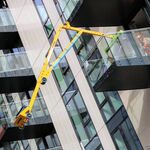The key I see there isn't the revenue, it's the costs. What kind of system is so inefficient that adding another car is barely worth it? What was the staffing ratio? How else could costs be cut? The train consisted of a freight locomotive, power car for HEP, a couple of coaches, and a cafe car, so 60% of the train was non-revenue. They also had to pay VIA to overnight in Toronto, as well as the movements to wye the train at both ends.
If the service were to re-start, how could costs be reduced? Food service more in line with VIA would eliminate the cafe car. A couple of additional NPCU/APUs like ONTC now has for the Polar Bear Express could replace the power car, and eliminate the need to wye the train. This would still allow a standard freight locomotive to provide motive power, since ONTC has them already in their fleet. ONTC is also now under the same agency as Metrolinx - are there savings working with them to service the train, and overnight it if necessary in Toronto? Many of these solutions have been raised by others, but it's especially relevent when you consider the high operating the legacy service.




